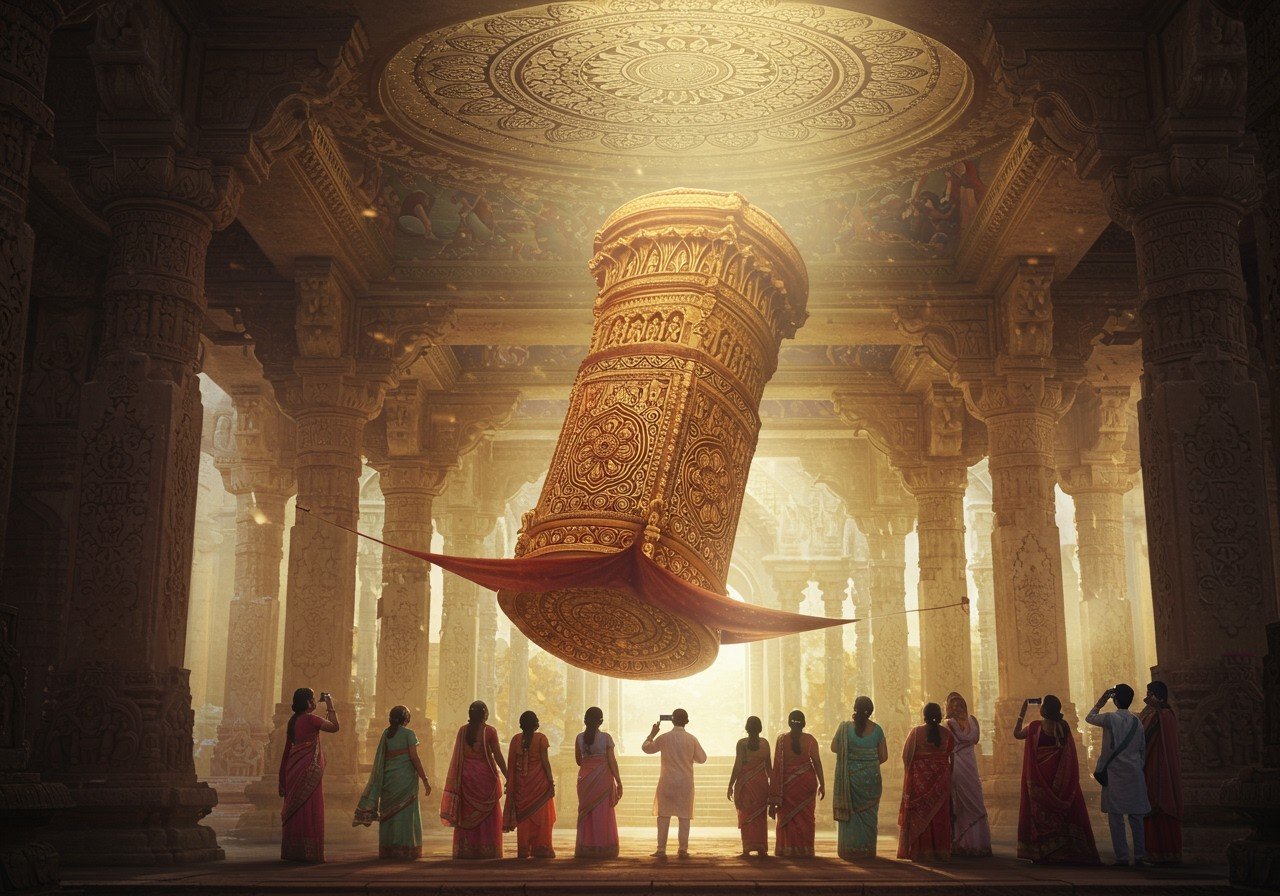
The Veerabhadra Temple in Lepakshi, Andhra Pradesh, is a captivating historical site renowned for its intricate carvings, vibrant frescoes, and the baffling mystery of the hanging pillar. This 16th-century marvel showcases the architectural brilliance and rich cultural heritage of the Vijayanagara Empire. Built between 1529 and 1542 A.D., this temple stands as a testament to the ingenuity of ancient Indian artisans and engineers.
A Glimpse into History
The Veerabhadra Temple was constructed by brothers Viranna and Virupanna, chieftains under the Vijayanagara King Achyuta Deva Raya. Dedicated to Veerabhadra, a fierce incarnation of Lord Shiva, the temple holds immense religious significance. The temple’s construction, between 1529 and 1542 A.D. , marks a significant period in the Vijayanagara Empire’s history.
Architectural Splendor
The temple exemplifies the exquisite Vijayanagara architectural style, characterized by:
- The Sanctum Sanctorum: The inner chamber housing the deity, a focal point of reverence and worship. It is here that the divine presence of Veerabhadra is believed to reside.
- Spacious Mandapas (Halls): Large, open halls used for gatherings, rituals, and religious ceremonies. These spaces provided ample room for devotees to congregate and participate in temple activities.
- Massive Nandi Statue: A colossal monolithic Nandi (Lord Shiva’s bull mount) stands as a testament to the skill of the sculptors. This impressive statue is a significant landmark within the temple complex.
The temple walls are adorned with intricate carvings and vibrant frescoes depicting scenes from the Mahabharata, Ramayana, and Puranas, adding to the temple’s cultural richness. These artistic depictions narrate epic tales and provide a visual feast for visitors.
The Mystery of the Hanging Pillar
Among the 70 pillars of the temple, one stands out as a remarkable engineering enigma – the hanging pillar. This pillar, seemingly defying gravity, does not fully rest on the ground, leaving a small gap beneath it. Visitors often pass objects under the pillar to experience this phenomenon firsthand.
Legend has it that a British engineer, intrigued by the pillar’s secret, attempted to move it. This attempt, though unsuccessful, is believed to have slightly dislodged the pillar from its original position. This incident further adds to the mystery surrounding the hanging pillar.
Engineering Ingenuity
The hanging pillar showcases the advanced engineering techniques employed by the ancient builders. These techniques include:
- Interlocking Techniques: Precisely crafted stone blocks fitted together without mortar, demonstrating advanced joinery skills. This technique ensured the stability and longevity of the structure.
- Counterbalancing Methods: A system of weights and balances possibly used to create the illusion of the hanging pillar. This clever engineering feat continues to baffle experts today.
These methods, combined with the builders’ deep understanding of structural engineering, allowed them to achieve this architectural feat, leaving a lasting legacy of their expertise.
Cultural and Spiritual Significance
The hanging pillar holds deep cultural and spiritual significance. Devotees believe it embodies divine presence and represents the architectural ingenuity of ancient India. The practice of passing a cloth under the pillar is believed to bring blessings and good fortune.
Preservation Efforts
Preserving the Veerabhadra Temple and its hanging pillar is of utmost importance. The Archaeological Survey of India (ASI) and other organizations are actively involved in conservation efforts to protect the temple from environmental factors and human interference, ensuring its structural integrity and historical authenticity for generations to come.
Poojn.in: Your Companion for Spiritual Needs
As you plan your visit to the Veerabhadra Temple, enhance your spiritual experience with authentic puja items from Poojn.in, India’s leading online store for cultural and religious goods. We offer a wide selection of products for Lord Shiva worship, including pure copper and brass items, bell metal diyas, rudraksha malas, and more. Visit Poojn.in today and prepare for a truly enriching spiritual journey.
For devotees seeking to perform Shiva puja at home, Poojn.in offers Shiva Lingam and Nandi sets, allowing you to create a sacred space for worship in your own home. Complement your puja with authentic bel malas and other essential items available on our website.
A Timeless Legacy
The Veerabhadra Temple stands as a timeless testament to India’s rich heritage and architectural brilliance. As you explore its intricate carvings, vibrant frescoes, and marvel at the enigmatic hanging pillar, you connect with the ingenuity and craftsmanship of ancient builders. Plan your visit today and experience the magic of Lepakshi.
Explore our blog for more insightful articles on Indian temples, rituals, and cultural heritage.
Learn more about Lord Shiva, the deity to whom this temple is dedicated, and deepen your understanding of his significance in Hinduism.


